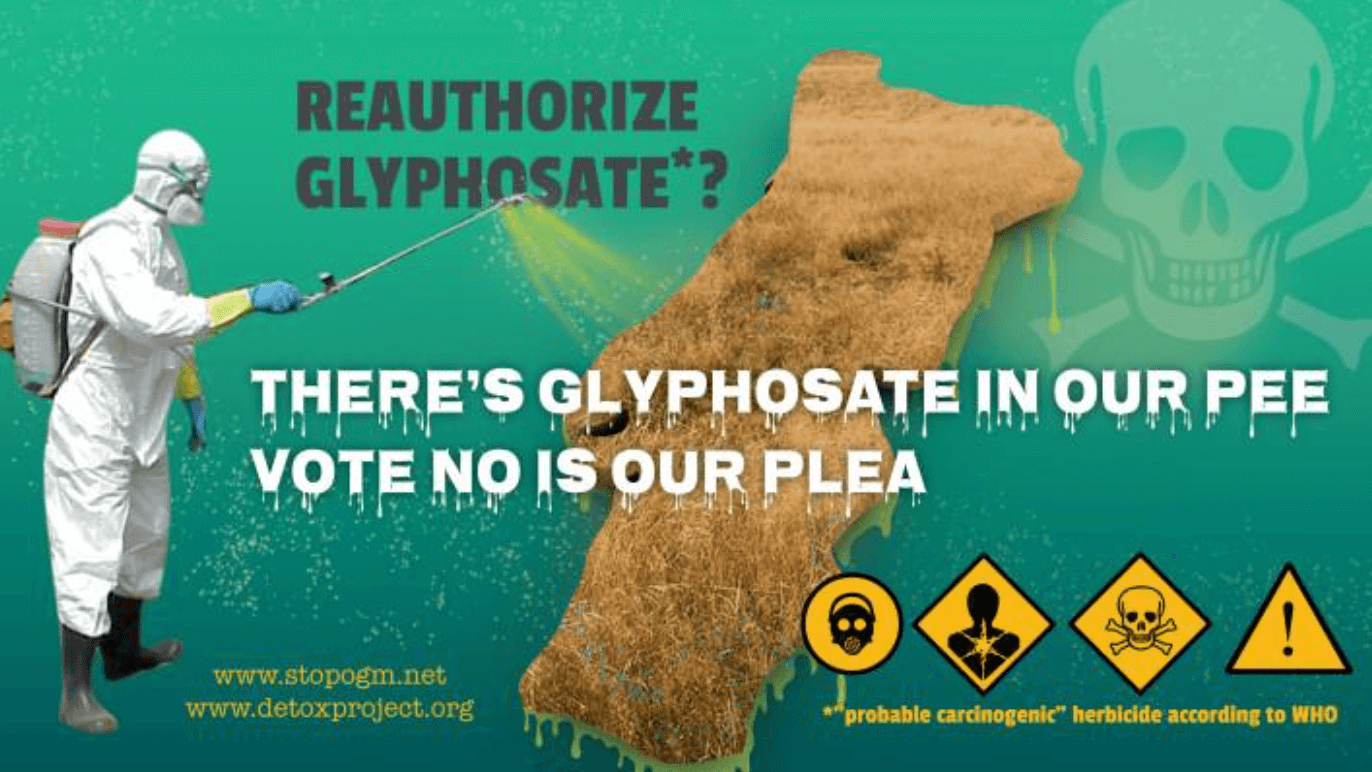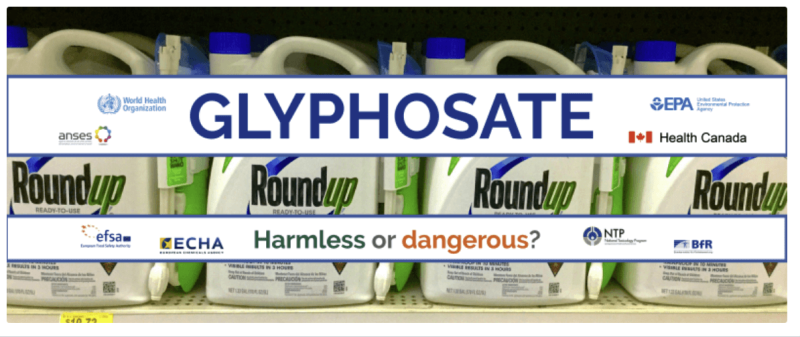Does the controversial weedkiller Roundup, made by Bayer and marketed in generic form by more than 30 companies as glyphosate, pose a cancer risk to humans?
Protestors in Europe, stirred by inflammatory campaigns launched by environmental activist groups, say ‘no’.
Is their opposition to the herbicide grounded in science or ideology? There are these facts that all sides agree on: As the most used weedkiller in the world, glyphosate is ubiquitous. Gardeners and other applicators have been spraying the herbicide for decades and the general population is exposed to it through micro-traces in our food. But does that exposure pose harm to human health or the environment?

What do environmental groups maintain?
Prominent activist groups on the environmental left have coalesced around the belief that there is overwhelming proof that glyphosate is carcinogenic and a killer, posing dangers to humans and the environment. Here are a few recent statements by high-profile anti-glyphosate campaigners:
Natural Resources Defense Council:
Glyphosate has been linked with an increased risk of non-Hodgkin’s lymphoma, a cancer that afflicts parts of the immune system.
Monsanto, perhaps the world’s most reviled environmental villain, has finally been busted for selling its poisonous products around the world.
Out of 2,310 urine samples taken from Americans intended to be representative of the population, CDC found that 1,885 contained detectable levels of glyphosate.
Children in the US are regularly exposed to this cancer-causing weedkiller through the food they eat virtually every day.

Reading these proclamations and without much background in science, it’s understandable that most people and many journalists believe that the scientific consensus confirms that glyphosate can cause cancer. This debate is particularly raucous in Europe, which is considering reauthorizing its use across the EU for ten years — much to the howling of environmental groups.

What does the research say?
Yes, glyphosate is found in many people’s urine samples. Is that a reason for concern? In and of itself, no.
Government researchers have found more than 3,000 chemical compounds regularly show up in urine tests in the US. The data are listed in the Urine Metabolome Database. Almost none of these identified chemicals in our urine are harmful.
“The fact that so many compounds seem to be unique to urine likely has to do with the fact that the kidneys do an extraordinary job of concentrating certain metabolites from the blood,” the researchers said. Glyphosate, like thousands of other metabolites, are safely and regularly excreted from the body.
But what about the four court cases in which plaintiffs won sizable victories based on claims that glyphosate caused their non-Hodgkin’s lymphomas? And Bayer (which acquired Monsanto in 2018) — the maker of the patented formulation of glyphosate known as Roundup — has already paid out an additional $10.9 billion to settle thousands of suits, with many more individual cases pending. Isn’t that proof enough?
No. Jury decisions do not follow scientific standards of proof. In civil litigation, jurors are told to weigh the evidence differently than would a scientist. Jurors don’t even have to decide “beyond a reasonable doubt” as they would in a criminal case. Instead, they are asked to reach a verdict based on the balance of probability.
In the words of one claimant’s lawyer, Brent Wisner, managing partner of the Church of Scientology law firm Wisner Baum (formerly Baum Hedlund), “Did the exposure cause the plaintiff’s cancer? ‘I’m not sure, but I think so’” is enough is decide in favor of the claimant. Wisner Baum has teamed with presidential aspirant Robert F. Kennedy, Jr. in litigating a number of these cases.

But what about the definitive statements from advocacy groups claiming, as the Center for Food Safety (CFS) has written, “Science has prevailed, and today it is accepted that glyphosate causes cancer.”
The formal and proper scientific term to describe that claim is “rubbish”. Science indeed has prevailed; every major independent oversight and regulatory agency in the world, bar none, has concluded the very opposite of what CFS and other activist NGOs regularly claim: glyphosate does not cause cancer as used.
As Health Canada concluded in two independent reviews of glyphosate:

But what about the International Agency for Research on Cancer, the only organization cited by environmental groups as a definitive source? In fact, IARC doesn’t even assess cancer risks”; rather it evaluates “cancer hazards”. What’s the difference? The risk of cancer depends upon exposure: “The dose makes the poison,” a pithy summary of the science credited to Pericles.
IARC has reviewed more than one thousand substances and found that all but one pose a cancer hazard. In its review of existing glyphosate studies, IARC (which does no original research), did not find sufficient evidence to link dietary exposure to cancer. As for the data on applicators, the studies IARC selected for review showed almost as much evidence that glyphosate prevented cancer as might cause it.

IARC has developed a notorious reputation over the past decade. Its conclusions are often perplexing and in contradiction to global risk agencies, and they often contradict mainstream science. This past summer. IARC issued a monograph claiming that the artificial sweetener aspartame was cancer-causing — a finding not supported by any risk agency in the world.
Among the chemicals or activities that IARC has determined pose more of a cancer hazard than glyphosate: getting a suntan; drinking wine or beer; eating salami; consuming Chinese-style salted fish; and taking oral contraceptives used safely by tens of millions of women every year.
Stated simply, IARC’s controversial cancer warning about glyphosate means little when set against thousands of studies that conclude the weedkiller poses minimal health and environmental risk. Yet it’s the 2015 IARC hazard conclusion, and only that limited review, that activists cite.
The global science community has looked in aggregate at thousands of studies and unanimously concluded that glyphosate does not pose a cancer risk if used as directed. The infographic below (which is downloadable in pdf form), summarizes 24 studies, almost all released after IARC’s 2015 report. The most recent assessment was released this past summer. For the second time in eight years, the European Food Safety Authority concluded:
The assessment of the impact of glyphosate on the health of humans, animals and the environment did not identify critical areas of concern…. It is the most comprehensive and transparent assessment of a pesticide that the EFSA and the EU Member States have ever carried out.
To accept the validity of ideology-tainted claims that glyphosate causes cancer, one would have to believe that two dozen independent agencies in the US, Canada, Europe, Asia, South America, Africa, Australia, and New Zealand, and three separate divisions of WHO, are coordinating in a scheme to suppress evidence of glyphosate’s cancer-causing dangers.
No, there is not a coordinated worldwide conspiracy. It’s just straightforward science: glyphosate is safe as used and there is no serious scientific debate.
Jon Entine is the founding executive director of the Genetic Literacy Project, and winner of 19 major journalism awards. He has written extensively in the popular and academic press on agricultural and population genetics. You can follow him on X @JonEntine
































